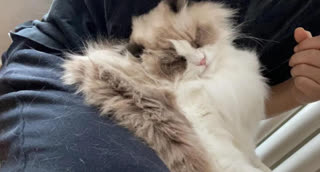Cats are not one-size-fits-all companions. From the playful Bengal to the dignified Persian, every breed has unique needs that demand tailored care. In this cat care guide, we’ll explore breed-specific strategies for grooming, nutrition, and health management. Whether you’re a first-time owner or a seasoned cat lover, this cat guide will equip you with actionable tips to ensure your feline thrives.
1. Understanding Breed-Specific Needs: The Foundation of Any Cat Care Guide
Before diving into care routines, recognize that "cat guide" recommendations vary dramatically by breed. For example:
High-Energy Breeds (e.g., Abyssinians, Bengals): Require daily interactive play (think puzzle feeders or laser pointers).
Long-Haired Breeds (e.g., Maine Coons, Persians): Need daily brushing to prevent mats, as noted in most cat care guides.
Flat-Faced Breeds (e.g., Exotic Shorthairs): Prone to respiratory issues—avoid dusty litter.
Pro Tip: Bookmark the CFA (Cat Fanciers’ Association) website for breed profiles—it’s a goldmine for cat guide research.
2. Grooming 101: A Cat Guide to Coat Types and Maintenance
A. Short-Haired Breeds (e.g., Siamese, Russian Blue)
Cat Care Guide Routine: Brush weekly with a rubber grooming mitt to reduce shedding.
Warning: Despite low maintenance, they still need nail trims every 2-3 weeks.
B. Long-Haired Breeds (e.g., Ragdoll, Himalayan)
Cat Guide Must-Do: Invest in a stainless steel comb and de-matting tool.
Pro Hack: Apply a cornstarch-based powder to knots before gently combing them out.
C. Hairless Breeds (e.g., Sphynx)
Unique Needs: Bathe weekly with hypoallergenic shampoo to remove oil buildup (a key cat care guide tip).
Sunscreen Alert: Protect their sensitive skin from UV rays with pet-safe sunscreen.
3. Nutrition: A Cat Care Guide to Breed-Appropriate Diets
Small Breeds (e.g., Singapura)
High-metabolism cats need calorie-dense, small kibble.
Cat Guide Tip: Feed 3-4 small meals daily to prevent hypoglycemia.
Large Breeds (e.g., Savannah Cat)
Prioritize joint-supporting supplements (glucosamine) in their diet.
Cat Care Guide Warning: Avoid overfeeding—obesity strains their long frames.
Brachycephalic Breeds (e.g., Persian)
Use shallow bowls to ease eating for flat-faced cats.
Hydration Focus: Add water to wet food to support kidney health.
Free Resource: Download our "Cat Guide to Feline Nutrition" PDF at [YourWebsite.com/cat-nutrition].
4. Health Risks by Breed: What Your Cat Guide Won’t Tell You
Even with perfect care, some breeds are predisposed to specific conditions:
Scottish Fold: Cartilage issues due to genetic mutations.
Maine Coon: Higher risk of hypertrophic cardiomyopathy (regular vet ultrasounds advised).
Bengal: Sensitive digestive systems—avoid grain-heavy foods.
Cat Care Guide Action Plan:
Ask breeders for genetic test records.
Purchase pet insurance early (e.g., Healthy Paws covers hereditary conditions).
Schedule bi-annual vet checkups for high-risk breeds.
5. Enrichment Strategies: A Cat Guide to Mental Stimulation
Boredom leads to destructive behavior. Match activities to your cat’s breed:
Oriental Breeds (e.g., Siamese): Teach tricks using clicker training—they love mental challenges.
Natural Hunters (e.g., American Shorthair): Hide treats in foraging toys.
Lap Cats (e.g., Ragdoll): Schedule daily cuddle sessions paired with gentle grooming.
Cat Care Guide Hack: Rotate toys weekly to prevent boredom—a tip praised by Jackson Galaxy.
6. Adopting a Mixed Breed? How to Adapt Your Cat Care Guide
Shelter cats often have unknown ancestry. Use these cat guide tactics:
DNA Testing: Brands like Basepaws reveal breed mixes and health risks.
Observe Behaviors: Climbing obsession? Likely part Maine Coon. Vocal tendencies? Possibly Siamese heritage.
Flexible Care: Start with a balanced diet and adjust based on their response.
Success Story: “After DNA testing my rescue cat, I tailored her cat care guide routine—she’s now healthier than ever!” – Sarah, Texas
Conclusion: Your Breed’s Wellness Starts With This Cat Care Guide
Caring for different cat breeds is equal parts science and art. By combining the breed-specific tips in this cat guide with regular vet consultations, you’ll create a thriving environment for your feline. For more insights, explore our cat care guide series on kitten socialization and senior cat wellness.
Final Tip: Share this guide with fellow cat owners—it might save a furry life!










